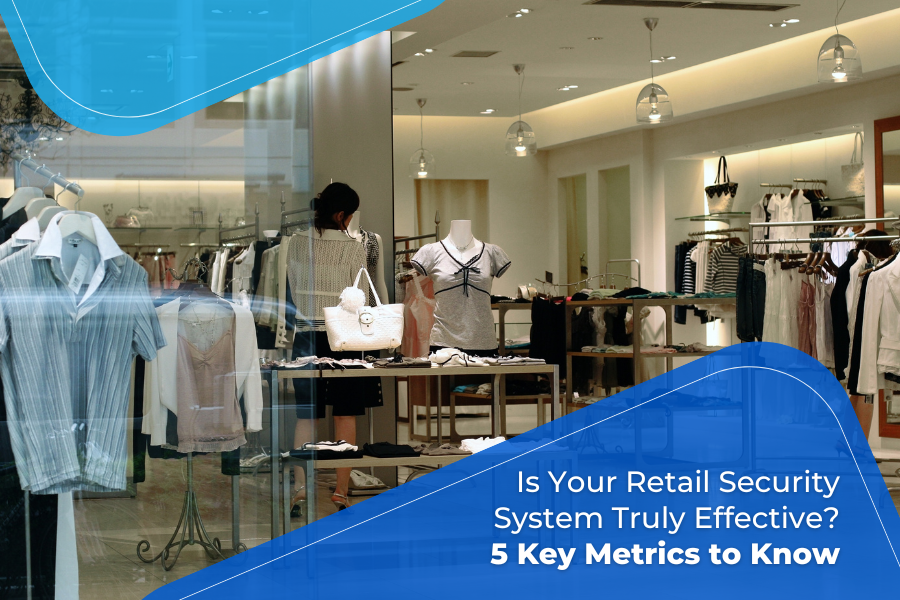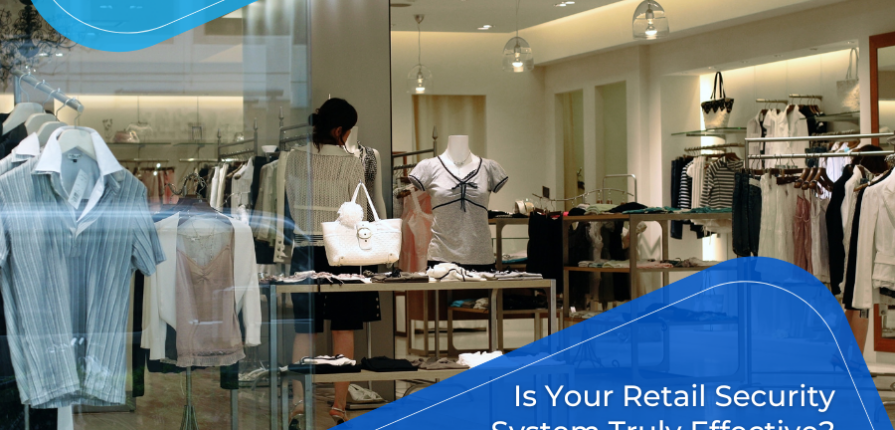
Retail security is a critical aspect of running a successful store. Yet, many business owners struggle to quantify the effectiveness of their security measures. By tracking the right metrics, you can gain valuable insights into your system’s performance, justify your security investments, and identify areas for improvement. Here are five key metrics that every retail owner should monitor to ensure their security system is truly effective.
1. Shrinkage Rate
Shrinkage rate is perhaps the most direct indicator of your security system’s effectiveness. This metric measures the percentage of inventory lost due to theft, fraud, or administrative errors. According to the National Retail Federation’s 2023 National Retail Security Survey, the average shrinkage rate for retailers was 1.6% of sales, representing a significant financial impact on businesses.
To calculate your shrinkage rate:
Shrinkage Rate = (Total Value of Lost Inventory / Total Sales) x 100
A decreasing shrinkage rate over time indicates that your security measures are working. If your rate is above the industry average or increasing, it’s a clear sign that your current system may be falling short.
2. Return on Security Investment (ROSI)
ROSI helps you understand the financial impact of your security investments. This metric compares the cost of security measures to the potential losses prevented. The formula for ROSI is:
ROSI = [(Annual Loss Expectancy x Mitigation Ratio) – Annual Cost of Solution] / Annual Cost of Solution
Where:
- Annual Loss Expectancy (ALE) is the expected financial loss without security measures
- Mitigation Ratio is the percentage of loss your security system is expected to prevent
A positive ROSI indicates that your security investment is financially justified. If your ROSI is negative or lower than expected, it may be time to reassess your security strategy.
3. Mean Time to Detect (MTTD)
MTTD measures how quickly your security system identifies potential threats or incidents. This metric is crucial for preventing losses and minimizing the impact of security breaches. To calculate MTTD:
MTTD = Total Time to Detect All Incidents / Number of Incidents
A lower MTTD indicates a more responsive security system. If your MTTD is high or increasing, it suggests that your current system may not be detecting threats quickly enough.
4. Mean Time to Respond (MTTR)
MTTR measures the average time it takes to respond to and resolve a security incident once it’s been detected. This metric is vital for assessing the efficiency of your security team and protocols. To calculate MTTR:
MTTR = Total Time to Respond to All Incidents / Number of Incidents
A lower MTTR indicates a more efficient response to security threats. If your MTTR is high or increasing, it may indicate issues with your response procedures or staffing levels.
5. False Alarm Rate
False alarms can be costly and disruptive to your business operations. They can also lead to complacency among staff, potentially causing them to ignore real threats. To calculate your false alarm rate:
False Alarm Rate = (Number of False Alarms / Total Number of Alarms) x 100
A high false alarm rate suggests that your security system may be overly sensitive or poorly calibrated. Aim for a rate below 5% to ensure your system remains effective and credible.
What to Do If Your System Falls Short
If your metrics indicate that your security system is underperforming, it’s crucial to address these gaps immediately. Leaving vulnerabilities in your security can lead to increased losses, potential harm to employees and customers, and damage to your business reputation.
1. Conduct a Comprehensive Security Audit
Start by performing a thorough assessment of your current security measures. This audit should include an evaluation of your physical security (locks, cameras, alarms) and your operational procedures (staff training, incident response protocols).
2. Upgrade Your Technology
Outdated security technology can leave your store vulnerable to modern threats. Consider upgrading to advanced systems that offer features like AI-powered video analytics, which can significantly improve threat detection and reduce false alarms.
3. Enhance Staff Training
Your employees play a crucial role in your security strategy. Regular training sessions can help them better identify and respond to potential threats, improving your overall security posture.
4. Implement Integrated Security Solutions
Standalone security measures are often less effective than integrated systems. A comprehensive solution that combines video surveillance, access control, and alarm systems can provide more robust protection and easier management.
5. Seek Expert Assistance
Sometimes, the most effective solution is to bring in security professionals. At Intense Security, we specialize in designing, implementing, and maintaining cutting-edge retail security systems. Our team can help you identify and address the specific vulnerabilities in your current setup, ensuring that your store remains protected against evolving threats.
Remember, gaps in your security system aren’t just statistics – they represent real risks to your business, employees, and customers. By regularly measuring these key metrics and addressing any shortcomings promptly, you can create a safer, more secure retail environment that protects your bottom line and gives you peace of mind.
Commercial Security Near Me
Intense Security is a leading provider of comprehensive retail security solutions. With over two decades of experience, we offer customized systems tailored to your unique needs. Our team of certified experts ensures seamless integration, superior performance, and ongoing support for your security measures. Contact us today for a free consultation and discover how we can enhance your retail security effectiveness.


